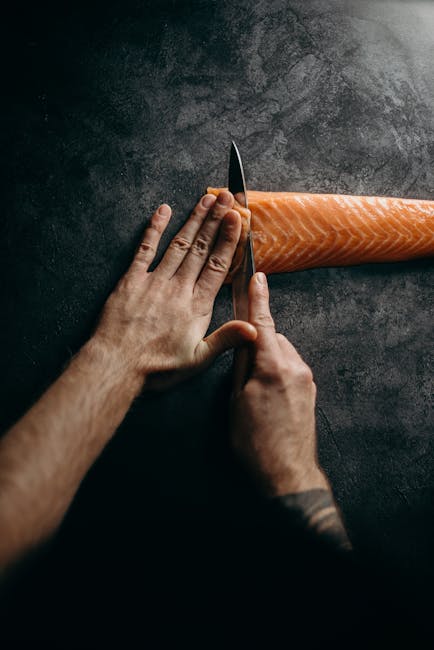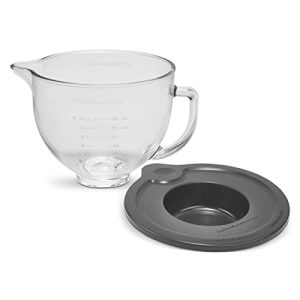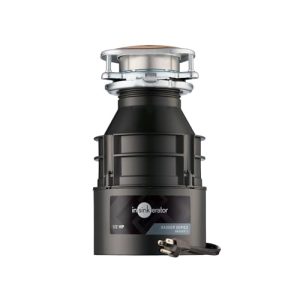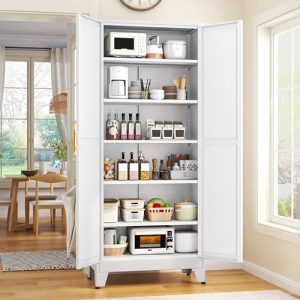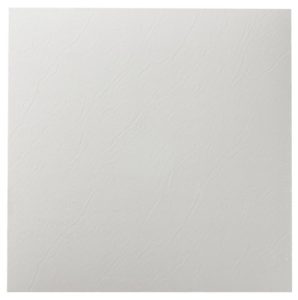Are you unsure how to measure your kitchen knife blade correctly? Knowing the exact length of your knife blade can make a big difference in your cooking experience.
Whether you want to buy a new knife, compare different blades, or just organize your kitchen tools, measuring your blade the right way is key. In this guide, you’ll discover simple steps that anyone can follow to get an accurate measurement every time.
Keep reading, and soon you’ll feel confident handling your knives like a pro.
Choosing The Right Tools
Choosing the right tools is key to measuring a kitchen knife blade accurately. Using proper instruments saves time and avoids mistakes. It also helps you get precise results that match your needs.
Preparing the knife correctly before measuring makes the process smooth. Clean and steady the blade for clear measurements. This step prevents errors and ensures safety.
Essential Measuring Instruments
- Ruler or tape measure with millimeter marks
- Caliper for precise blade thickness and length
- Marker or tape to mark start and end points
- Flat surface to keep the knife steady
Choose tools that are easy to read and handle. Avoid devices that might slip or cause injury. A digital caliper adds accuracy but a simple ruler works well too.
Preparing The Knife For Measurement
- Clean the blade to remove dirt and oils
- Dry the knife completely to avoid slipping
- Place the knife on a flat, stable surface
- Use a non-slip mat or cloth under the knife
- Hold the knife steady but avoid covering the blade
Preparation helps you measure the blade length and width clearly. It reduces the chance of errors or accidents. A clean and steady blade gives the best measurement results.
Measuring The Blade Length
Measuring the blade length of a kitchen knife helps you understand its size and purpose. This measurement shows the cutting edge you use for chopping, slicing, or dicing. Knowing the blade length assists in choosing the right knife for your cooking tasks.
Identifying The Blade’s Start And End Points
Find the exact points where the blade begins and ends. The blade starts at the part closest to the handle, called the heel. The blade ends at the tip, the sharp point opposite the heel. Avoid including the handle or tang in your measurement.
The cutting edge runs from the heel to the tip. Make sure to measure along this edge, not the spine or back of the blade. This gives the true length of the blade used for cutting.
Using A Ruler Or Tape Measure
Place a ruler or tape measure flat against the cutting edge. Align the zero mark at the heel of the blade. Stretch the ruler or tape along the edge up to the tip.
Read the number where the blade ends. Use inches or centimeters, depending on your preference. Check that the ruler is straight and not bent for an accurate measure.
- Use a metal ruler for better precision
- Hold the knife steady on a flat surface
- Measure twice to confirm accuracy
Measuring Blade Width And Thickness
Measuring the width and thickness of a kitchen knife blade helps understand its cutting ability and strength. These dimensions affect how the knife handles tasks like slicing, chopping, and dicing. Knowing the blade size ensures you choose the right knife for your kitchen needs.
Finding The Widest Part Of The Blade
The blade width is the distance from the spine to the cutting edge. Find the widest part of the blade by looking along the blade’s length. Usually, this spot is near the heel, close to the handle. This area offers the most surface for cutting and is key for measuring width.
Use a ruler or tape measure to get the width. Lay it flat across the blade at the widest point. Read the measurement in millimeters or inches. Record the number for comparison with other knives.
Using Calipers For Thickness
Blade thickness shows how thick the metal is from spine to edge. This affects the knife’s durability and sharpness. Use calipers for a precise thickness measurement.
Place the caliper jaws around the blade spine at the thickest point. Gently close the jaws without squeezing too hard. Read the thickness on the caliper scale. Digital calipers provide an easy-to-read number.
Knowing thickness helps decide if the knife fits your cooking style. Thicker blades are strong but less nimble. Thinner blades cut smoothly but may be fragile.
Recording Accurate Measurements
Measure the blade from the tip to where it meets the handle. Use a ruler or tape measure for exact length. Keep the blade straight for the best result.
Recording accurate measurements of a kitchen knife blade can be a game-changer in your culinary adventures. Whether you’re a professional chef or a home cook, understanding the exact dimensions of your knife can help you choose the right tool for the task at hand. Precision in measurement ensures that your cuts are consistent, leading to better cooking results. Let’s dive into some practical tips for getting those measurements right.Tips For Consistency
To ensure consistency, always use the same measuring tool. A reliable ruler or tape measure can make all the difference. Hold the knife steady on a flat surface. This minimizes errors caused by angles or wobbles. When measuring, start from the tip of the blade to the heel. This gives you the full blade length, which is crucial for a precise reading. Consider keeping a dedicated notebook for your measurements. It can be a valuable reference for when you need to replace or compare knives.Avoiding Common Mistakes
Avoid measuring the handle along with the blade. This is a common error that can lead to inaccurate measurements. Ensure your ruler is aligned parallel to the blade. Even a slight tilt can skew the results. Double-check your measurements. It’s easy to misread numbers or misplace a decimal point, especially if you’re in a hurry. Lastly, don’t forget to clean the knife before measuring. Any residue can affect the accuracy and safety of the process. Have you ever wondered how a seemingly small detail like blade length can affect your cooking? With these tips, you’ll be equipped to measure your kitchen knife accurately and confidently.Applying Measurements For Knife Selection
Applying the right measurements to select a kitchen knife blade can transform your cooking experience. Knowing the exact size helps you pick a knife that feels comfortable and efficient. It’s not just about length; the blade’s size impacts how you handle different kitchen tasks and the overall balance of the knife.
Matching Blade Size To Tasks
Choosing the right blade length depends on what you mainly cook. Smaller blades, around 4 to 6 inches, work best for precision tasks like peeling or trimming. Larger blades, 8 to 10 inches, handle chopping and slicing bigger ingredients like melons or roasts more easily.
Think about your daily kitchen routine. Do you mostly cut vegetables or carve large meats? Matching blade size to these tasks can save you time and effort. Have you noticed how a too-long blade can feel unwieldy during delicate cuts?
Considering Handle And Balance
The blade size affects the knife’s balance, which impacts control and comfort. A longer blade with a light handle might feel tip-heavy, causing fatigue during extended use. Conversely, a small blade with a bulky handle may feel awkward and reduce precision.
Try holding knives with different blade lengths to see how the weight feels in your hand. Good balance means the knife should feel like a natural extension of your arm. Have you ever struggled with a knife that felt off-balance and slowed you down?
Frequently Asked Questions
How Do You Measure A Kitchen Knife Blade Length?
Measure from the blade’s tip to where it meets the handle. Use a ruler or tape for accuracy. This length helps determine the knife’s best uses and storage needs.
What Tools Are Best For Measuring Knife Blades?
A steel ruler or measuring tape works best for kitchen knife blades. They provide clear and precise measurements in inches or centimeters. Avoid flexible tools that may bend and give inaccurate results.
Why Is Knowing Blade Length Important?
Blade length affects cutting performance and safety. It helps you choose the right knife for tasks like chopping or slicing. Knowing the length also aids in proper knife storage and maintenance.
Should I Measure The Blade With Or Without The Handle?
Measure only the blade portion, excluding the handle. This ensures you get the true cutting edge length. The handle size varies and doesn’t affect blade performance measurements.
Conclusion
Measuring a kitchen knife blade helps you choose the right tool. It ensures better control and safety while cutting. Use a ruler or tape to find the blade length. Measure from the handle’s base to the tip carefully. Keep your knife sharp and clean for best results.
Knowing your blade size improves your cooking experience. Take your time and measure with care. Simple steps lead to better kitchen work.

Sophie Hartwell is the founder of KitchenQuik.com, where she shares kitchen tips, smart cooking hacks, and the best product picks to make everyday cooking easier and more enjoyable.
